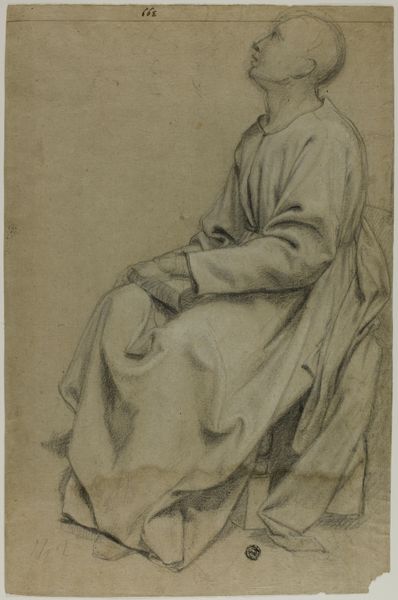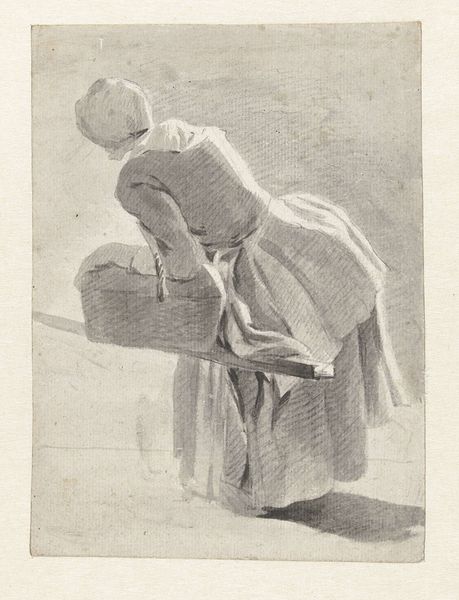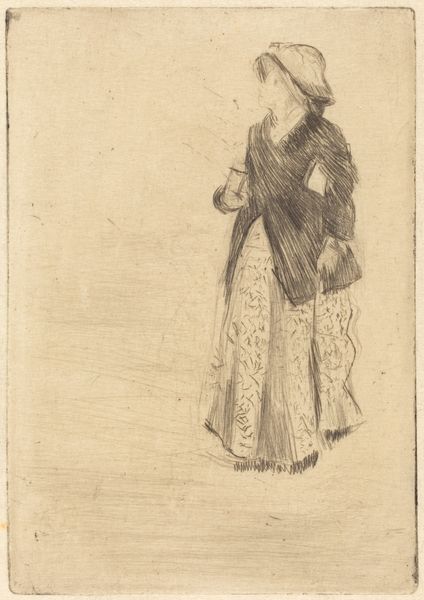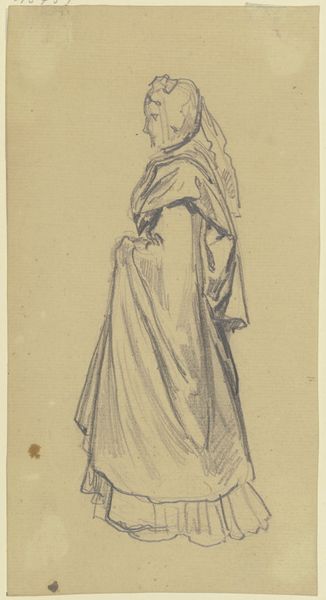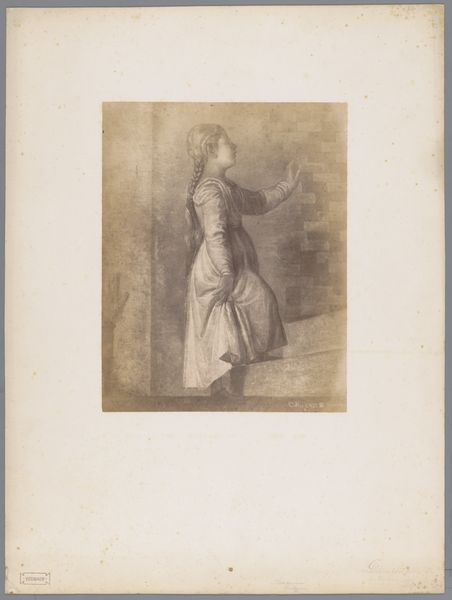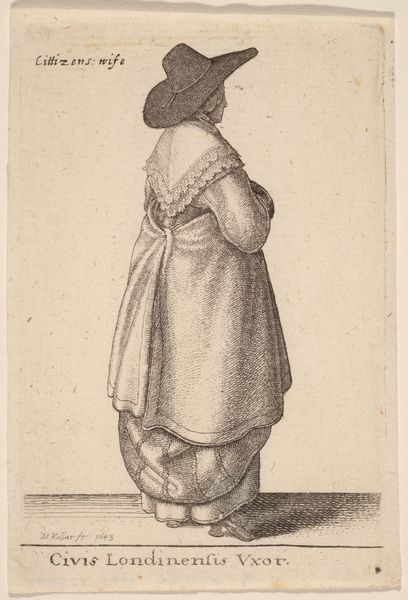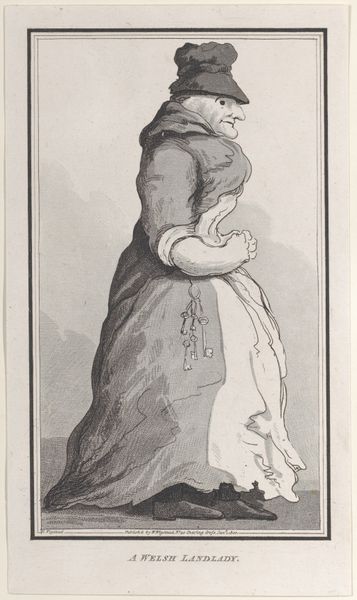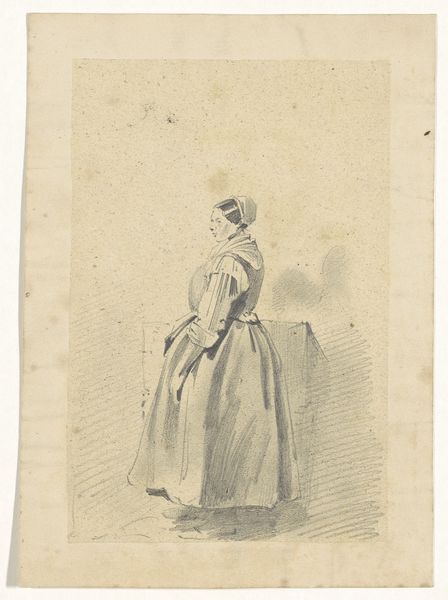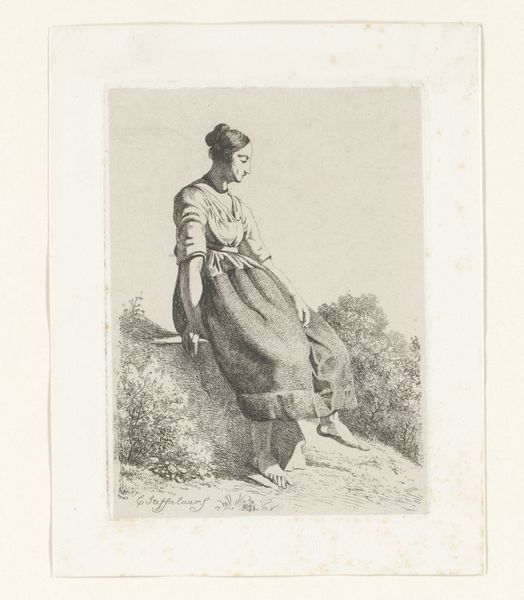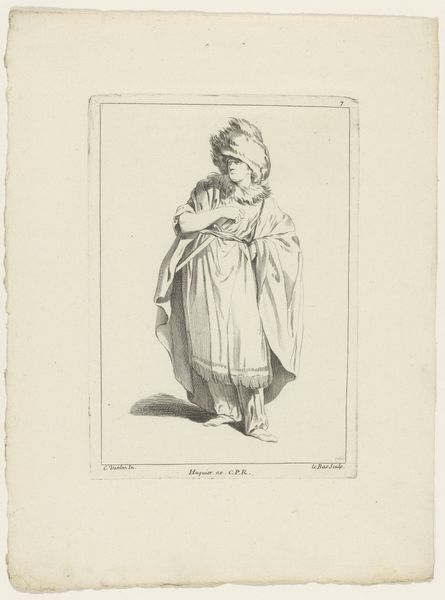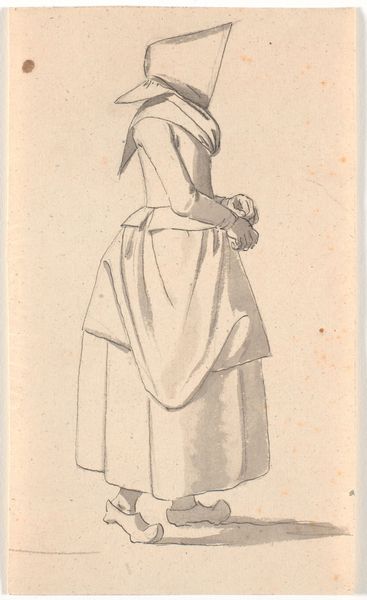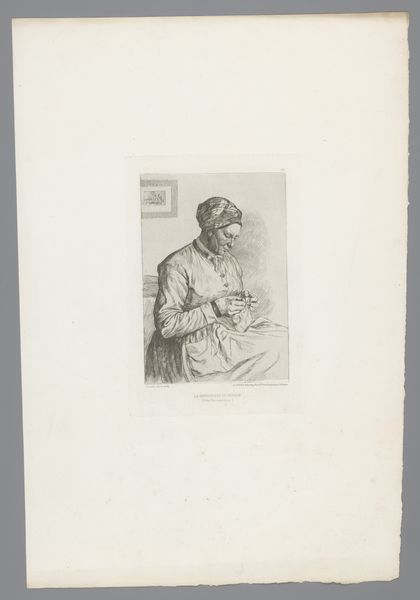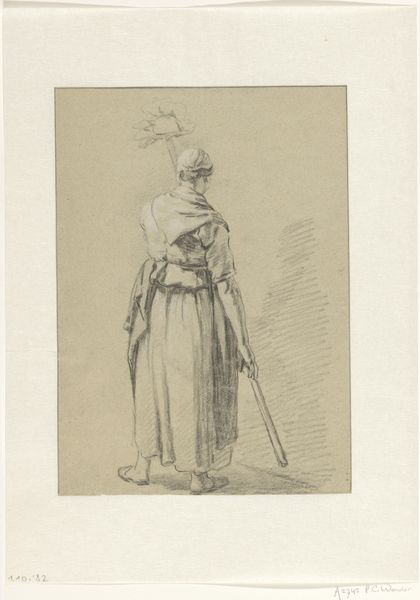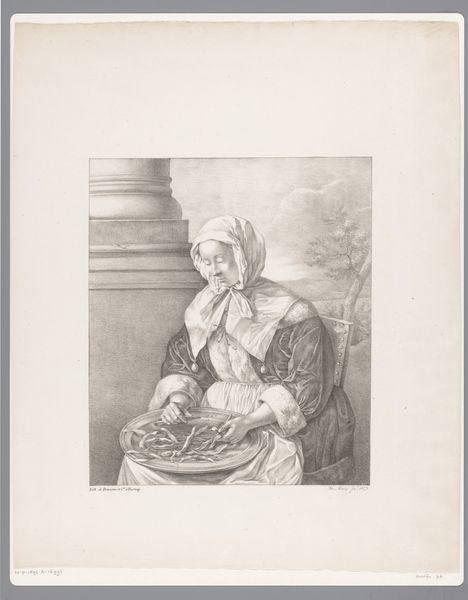
drawing, charcoal
#
portrait
#
drawing
#
baroque
#
charcoal drawing
#
figuration
#
charcoal art
#
portrait drawing
#
charcoal
#
academic-art
Dimensions: 240 mm (height) x 174 mm (width) (bladmaal)
Curator: Our attention is drawn to this charcoal drawing, "Seated Woman," attributed to an anonymous artist and dated between 1631 and 1664. It’s currently housed here at the SMK, Statens Museum for Kunst. Editor: Immediately, I'm struck by the muted tones and the subject's introspective pose. There's a palpable sense of stillness and perhaps even melancholy in the way the artist has used light and shadow to define the figure. Curator: The academic art style prevalent at the time heavily influenced figuration in portraiture. This piece embodies a type of posed formality favored by wealthy patrons, echoing the power dynamics inherent in portrait commissions of that era. Editor: Note the formal balance. The artist uses chiaroscuro expertly to render the folds of her dress. Also, that strange, tightly bound head covering draws your eye immediately – almost unnervingly so. It’s this element that pushes beyond mere documentation into something emotionally evocative. Curator: Exactly. These stylistic choices reflect Baroque portraiture’s effort to ennoble, despite potential somber tones. How do such artistic portraits become tools of personal or political legitimation? Considering the time it was created, perhaps this garment symbolized not oppression, but a kind of dignified, almost theatrical self-presentation within specific social circles. Editor: Regardless of specific intentions, the artist's adept handling of charcoal creates remarkable texture – feel the fabric’s drape and the subject's stillness. There’s complexity achieved via reductive techniques, the gray palette focusing our attention purely on form. I want to reach out and touch the fabric, the shadows look like soft velvet. Curator: The anonymous nature also shifts its place. Not tied to a master’s legacy or studio production directly, perhaps that makes her more archetypal of women in Baroque portraiture— forever bound by the visual representations afforded to her through her social era. Editor: And yet, the expressiveness transcends anonymity, allowing for deeper interaction. Form and context weave together to generate emotional impact. A figure, suspended both in shadow and time. Curator: That interplay between formality and expressive humanity, shaped by and reacting against artistic traditions and societal norms, truly defines why we still look at her centuries later. Editor: Indeed, its ambiguity makes the silent pose resonate so loudly, still offering surprises despite its simplicity of material and construction.
Comments
No comments
Be the first to comment and join the conversation on the ultimate creative platform.
